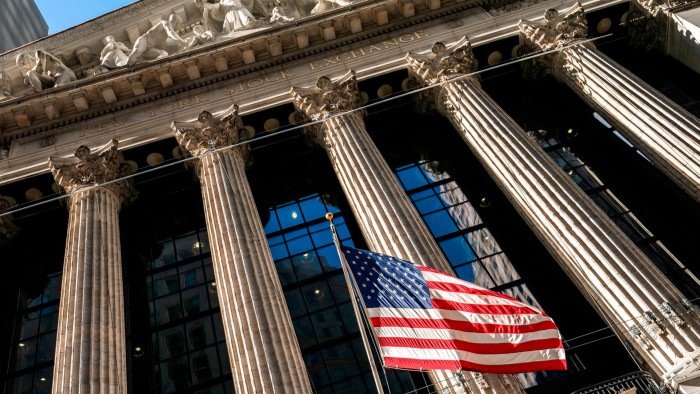S&P 500 falls into correction after losing 10% from summer peak

Simply sign up to the US equities myFT Digest -- delivered directly to your inbox.
The S&P 500 stock index has fallen more than 10 per cent from the high point it touched earlier this year, meeting the popular definition of a market “correction” as investors fret about interest rates, geopolitical risks and mediocre third-quarter company results.
Wall Street’s blue-chip equities benchmark dipped 0.5 per cent on Friday, pushing it just over the correction threshold compared with its 2023 peak on the final day of July.
The US stock market surged in the first seven months of the year, driven by enthusiasm about artificial intelligence and optimism that the Federal Reserve was approaching the end of its campaign to raise interest rates.
However, it is now on track for its third consecutive month of declines, the longest monthly losing streak since the outbreak of the coronavirus pandemic in early 2020. The Nasdaq Composite index also fell into a correction earlier this week, though it recovered slightly on Friday.
“It’s been a bit of a slow-motion sell-off,” said Stuart Kaiser, head of US equity trading strategy at Citigroup. “Sentiment is generally negative . . . [but] stress metrics haven’t moved that much, it’s been relatively orderly.”
The S&P 500 dropped at least 2 per cent in a day on more than 20 occasions last year, while this year it has happened only once, in February. The Vix volatility index, which tracks expectations of stock market swings over the next month, is only marginally above its long-term average.
However, a combination of factors have been driving the market gradually lower, the biggest being the realisation that the Fed is likely to keep interest rates high for an extended period to bring inflation under control.
That has driven up yields on US government bonds, with the benchmark 10-year yield touching a 16-year high at the start of this week. Higher rates reduce the relative value that investors are willing to place on stocks, particularly those that are valued primarily on the promise of profits far in the future.
“A bird in the hand is worth something now,” Schroders chief investment officer Johanna Kyrklund told reporters earlier this week. “The [fear of missing out] market is done, it’s the ‘do your homework’ market now.”
Pressure from interest rates has been exacerbated by the outbreak of war between Israel and Hamas, which has driven a flight towards assets perceived as havens such as gold and the Swiss franc.
With large US companies in the midst of third-quarter earnings season, a few high-profile disappointments have added to the negative mood among investors despite the fact profits overall have been resilient.
Google parent Alphabet dropped almost 10 per cent on Wednesday after narrowly missing revenue forecasts in one division, whereas companies that beat expectations, such as Microsoft, enjoyed only modest share price gains.
Kaiser said the contrasting reactions suggested investor positioning in some stocks had become stretched after long rallies earlier in the year, but he said he was “cautiously optimistic” about the prospects of a turnaround by the end of the year.
Kaiser said: “It’s easy to get distracted by some of the moving parts and the event risk, but the bottom line is that the underlying macro picture is still strong.”
Despite its recent swoon, the S&P 500 is still up 7 per cent this year and 15 per cent higher compared with its nadir during last year’s bear market.
Comments